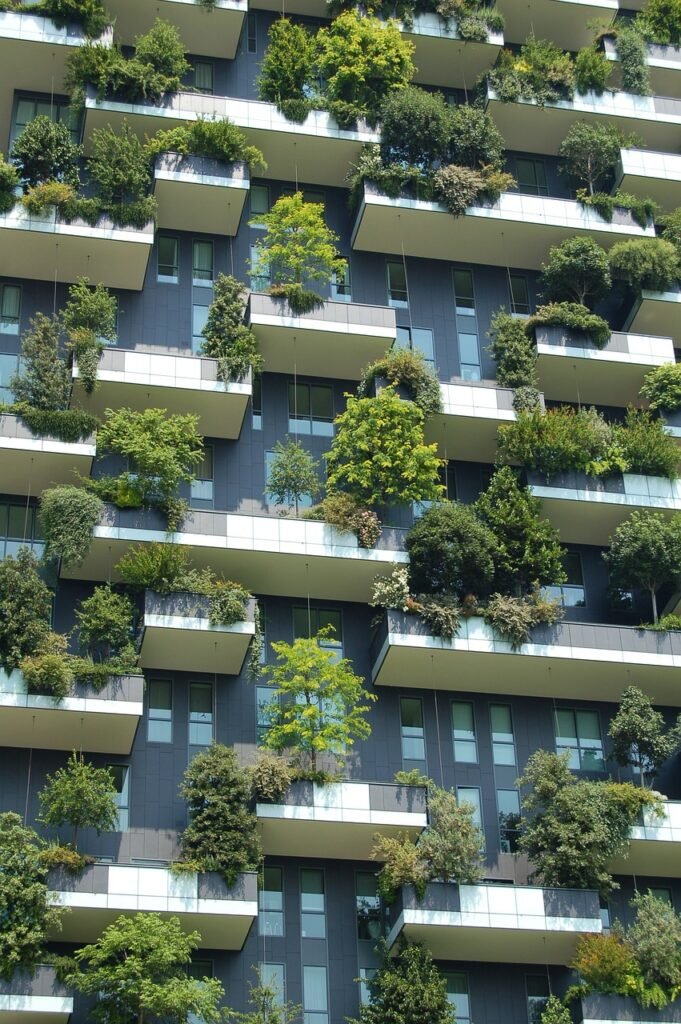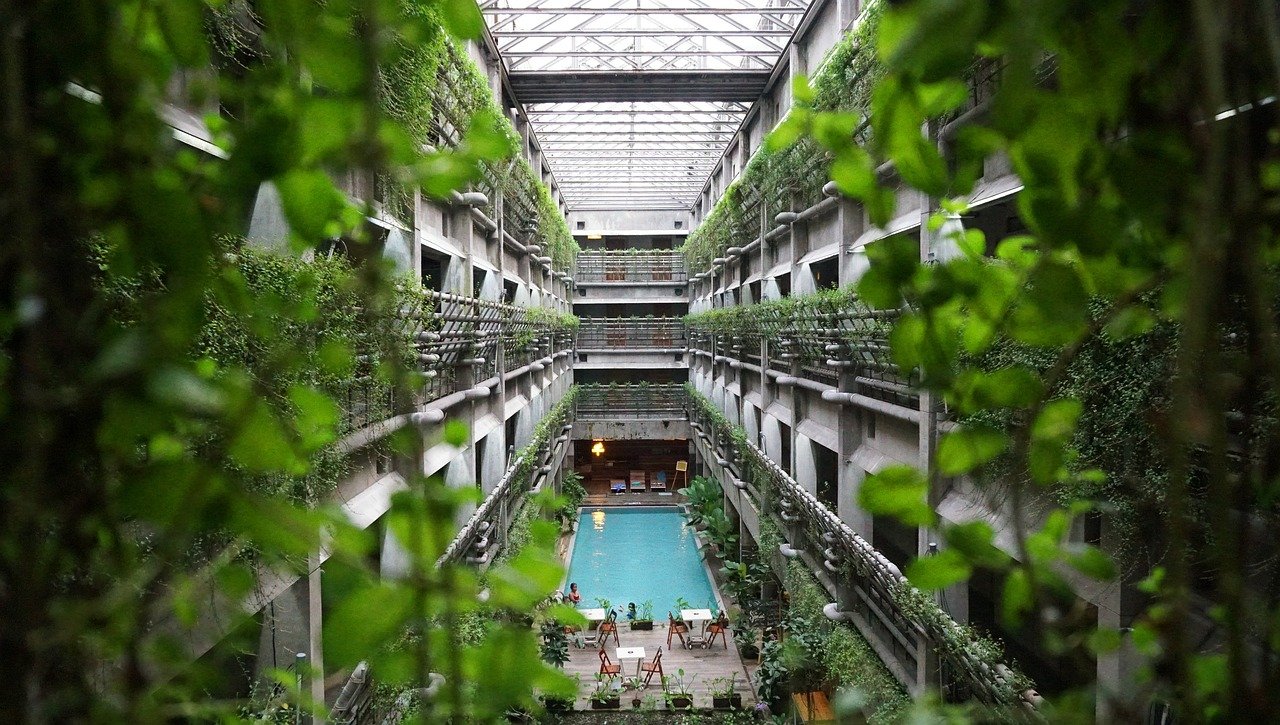In our current world, where we are turning very environmentally conscious, people are adopting principles that incorporate practices that make a positive input on the earth. The topics of climate change, environmental degradation, and depletion of resources today require extreme sustainable solutions in each and every domain, including construction, with the green building certification comes to aid-the rather fundamental steps guiding developers as well as architects and builders when making buildings that are environmentally friendly. Here, the value and built environments are not just required to be sustainable, but must also be resource-efficient.

We’ll wager that the benefits, requirements, and steps of the green building certification steps have already been detailed so far in this report as you consider the same for your next project in real estate. What Is the Green Building Certification?
This certification will validate the performance and environmental sustainability of the building through a third-party check; this includes a broad range of criteria: not only energy efficiency, but also indeed about water and air quality as well as the material used in construction, since all of this will have transformative effects on the certification, creating a scenario where the developer or the property owner is demonstrating environmental stewardship in the true sense and ensuring the health of the building design for a healthier future.
Prime Green Plaque Bodies Internationally
Numerous organizations from all over the world have many green certification schemes, but they have different axes cutting through what makes them different. These are some examples:
LEED – Leadership in Energy and Environmental Design
Usually, people get the terms “green certification of buildings” on seeing the same phrase. Everybody believes that a building can get LEED certification by collecting points in various realms of the building for being energy efficient, sustainable in manual and water, and green in construction material.
BREEAM is used to determine the impact of Environmental Assessment system buildings in the UK. The system primarily evaluates energy consumption, management, and water usage, and waste reduction processes unlike being multidisciplinary.
WELL
The WELL Certification creates spaces for the building occupants to be well and healthy. The International WELL Building Institute (IWBI) hence formulates certain standards that will be assessed with respect to this feature-a rule involving health through such aspects as air quality, access to natural light, and conditions regarding physical activity.
EDGE (Excellence in Design for Greater Efficiencies)
EDGE certification is developed by International Financial Corporation ensuring savings in the design of a building mainly but at the same time looks to ensure that the buildings are made from sources that will not disturb the future supply. EDGE certification results in at least a 20% reduction in energy, water, and materials compared to traditional buildings.
Green Globes
Green Globes Green Globes is a certification system developed by the Green Building Initiative providing a fairly detailed framework for evaluating the environmental sustainability and energy efficiency of buildings.
Green Building Certifications in India
The journey made by India to promote sustainable building practices is plausible. Further, there exists many green building certifications for the developer to choose among, such as:
IGBC (Indian Green Building Council)
As an organization, IGBC advocates eco-friendly methods in the country. This organization has certification procedures based on points to assess the damage of the building environment.
GRIHA (Green Rating for Integrated Habitat Assessment)
Green Rating for Integrated Habitat Assessment (GRIHA)
The recognition of the national green rating system for buildings in India was given by the Renewable and New Energy Minister’s office. The building will have to be green-evaluated: not only specific systems, but all aspects of energy efficiency, water conservation, and environmental effects.
BEE Ratings mark how well a building performs with respect to energy usage. Higher ratings mean better energy efficiency, and therefore lead to lower energy costs and environmental costs.
Eco-Housing Certification
Eco-Housing Certification has been conceptualized by Ministry of Housing and Urban Affairs (MoHUA) to encourage the best practices in construction of housing premises to boost ecological and social protocols.
Impulse on sustainable building certifications
Green building certifications come in different forms and types, but there are similarities in the criteria set by most green building standards such as:
Energy Performance Standards
The area specific to green building certification is in the value of energy efficiency. It involves utilizing energy-efficient lighting, as well as maintaining efficient heating, ventilation, and air conditioning (HVAC) systems. Besides lowering energy expenses, the activities include reducing the carbon footprint left by the building.
Green Construction Materials
They use materials that are either recycled, product of renewable resources, or locally obtained so as to limit the ecological impact to the greatest extent possible and promote sustainability in construction.
Water Management System
Water usage needs to be maintained optimally through green building; use of low-flow plumbing fixtures, rainwater catchments, greywater systems, and others that can save water use and reduce reliance on municipal drinking water systems.
Indoor Environmental Quality
Healthy indoor environments are required for the well-being of individuals residing within these buildings. A major focus issue is improving the general well-being of people using buildings by improving indoor air quality, natural lighting, and also ventilation and most notably productivity.
Solid Waste Management
Strategies for green construction reduce the quantity of waste generated in construction work and in routine maintenance of a building throughout life such as recycle, compost, and reclaim materials to shun waste being sent to landfills.
Determining the Right Green Building Certification:
Among the many options available for certification, identifying the best one can be a tough nut to crack. Keep all the following factors in mind:
Project Goals: Define your objectives: Different certification programs focus on different things like energy performance, healthiness for occupants, or sustainability.
Building Type and Location: A few specific types and locations might be correlated with reaching goals of the highest LEED certification(s).
Certification Level: Decide the discipline(s) you are following because several programs offer several levels varying from Basic to Silver, Gold, or Platinum.
Cost and Fees: Consider registration, documentation, and verification costs.
Reputation and Credibility: Choose a credible certification.
The Course of Certification
The usual course of certification is divided into several main parts:
Registration: Enroll in the certification program.
Documentation: Present all required papers like layout design plans, energy data or doings, and green performance.
Verification: Site examination or schedule audit as a subprocess of the certificate body ensures that the building comes in line with the predetermined inquiry criteria.
Certificate: Printing of certificates if the building meets such standards.
Maintenance: Continuous monitoring and reporting ensure that the building continues to go for the achievement of such standards of green building certification.
Advantages of Green Building Certification
The rewards of shifting to green with your building project are as follows:
Ecological: It conserves natural resources by using less energy, conserving water, and reducing waste.
Economic value: Reducing expenses gives advantages—tent values and increase tenant output in property.
Social value: Inhaling a higher quality of air and improved health conditions improve the life of occupiers in these buildings.
Market advantage: Green buildings outshine all else and are desirable to eco- conscious buyers and tenants.
CONCLUSION
Building sustainable practices is not only in vogue but a step towards a healthier and more green future. Green building certifications have provided a transparent framework with a strong solid foundation to create energy-efficient, resource-conscious, and good-facility oriented structures. Going green should not drain your savings while affecting positive impacts on the environment.
Confident Group takes you to the next level in sustainability-leaning housing. Together, let’s contribute to eco-friendly living.







Leave a Reply